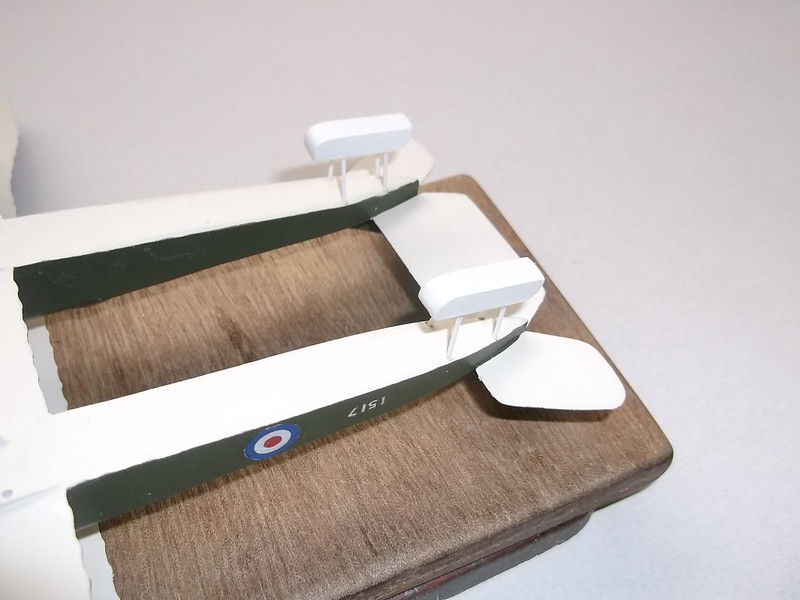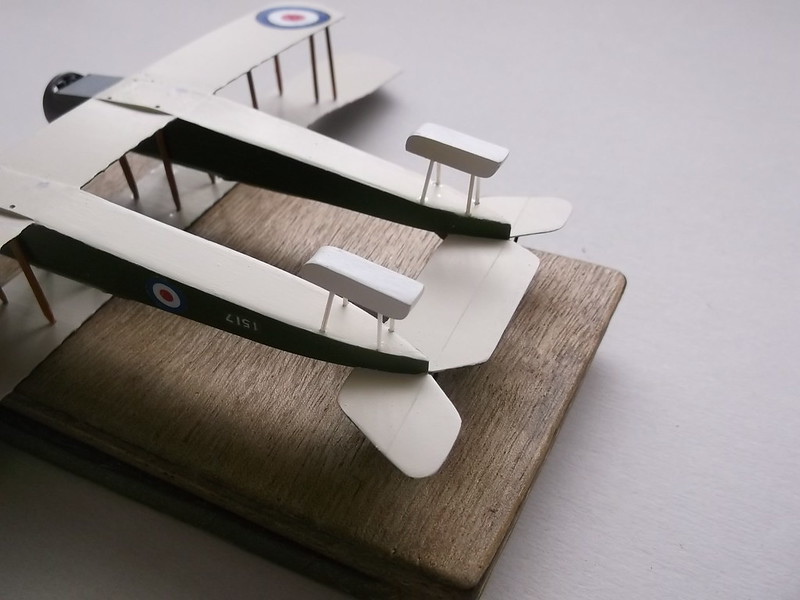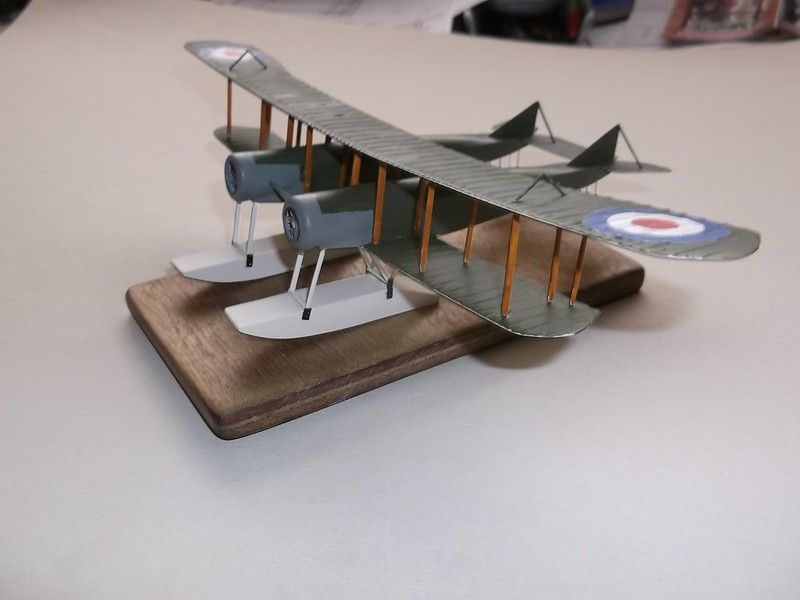Evening All,
Thanks Frank, Richard, Manni, Rick, Ken, Bud and Terri for the encouraging remarks which given recent circumstances I appreciated more than usual. I have been experiencing the dubious joys of a very heavy cold during the past few days and this has been detrimental to both my ability to concentrate and my levels of patience. If it were not for a looming GB deadline I would probably have waited until I was better before attempting this stage, but I had not anticipated the difficulties that I was to encounter, and being the stubborn fool that I am I carried on....
The rear pair of floats were fixed using 20 thou rod cut to length: first one side was fixed and then the other was made so that it matches from the side and longitudinally. The struts are not vertical so this operation would have been tricky even if I had been feeling normal. As it was it took three attempts to get the second float properly aligned. The struts were painted after I had calmed down.


That left the two large floats at the front. These too had to match both from the side and be properly aligned longitudinally and again the struts are not vertical with respect to the bottom of the fuselage or thrust line. There is also a cross strut between the forward and rear pairs and there were fixings on the floats to allow the angle of incidence to be changed - this was an experimental type. Knowing from experience that fitting one float would be relatively straightforward I decided to tackle one side and then wait until I felt better before tackling the other. I will not give a blow by blow account but Burns' memorable lines about "best laid plans of mice and men" assumed significant proportions while I was trying to get even the first float properly aligned. The second finally submitted after a real struggle: I have not had such problems that these presented for a very long time. But they are there now....and the aircraft is a tail sitter! But I have a cunning plan - to which I mean that I intend to mount the model on small carriages and trestles as per the photos of the machine represented by the model when it was at RNAS Grain in 1916.



And before anyone comments I have still not properly softened the cockades on the upper wing: I have not had the patience left to deal with that yet!
When I am feeling considerably better I will rig this model and add the final details. In the meantime I am making a small base and the carriages and trestles which require much less concentration and can be picked up and put down easily.
Thanks for looking.
Stephen.